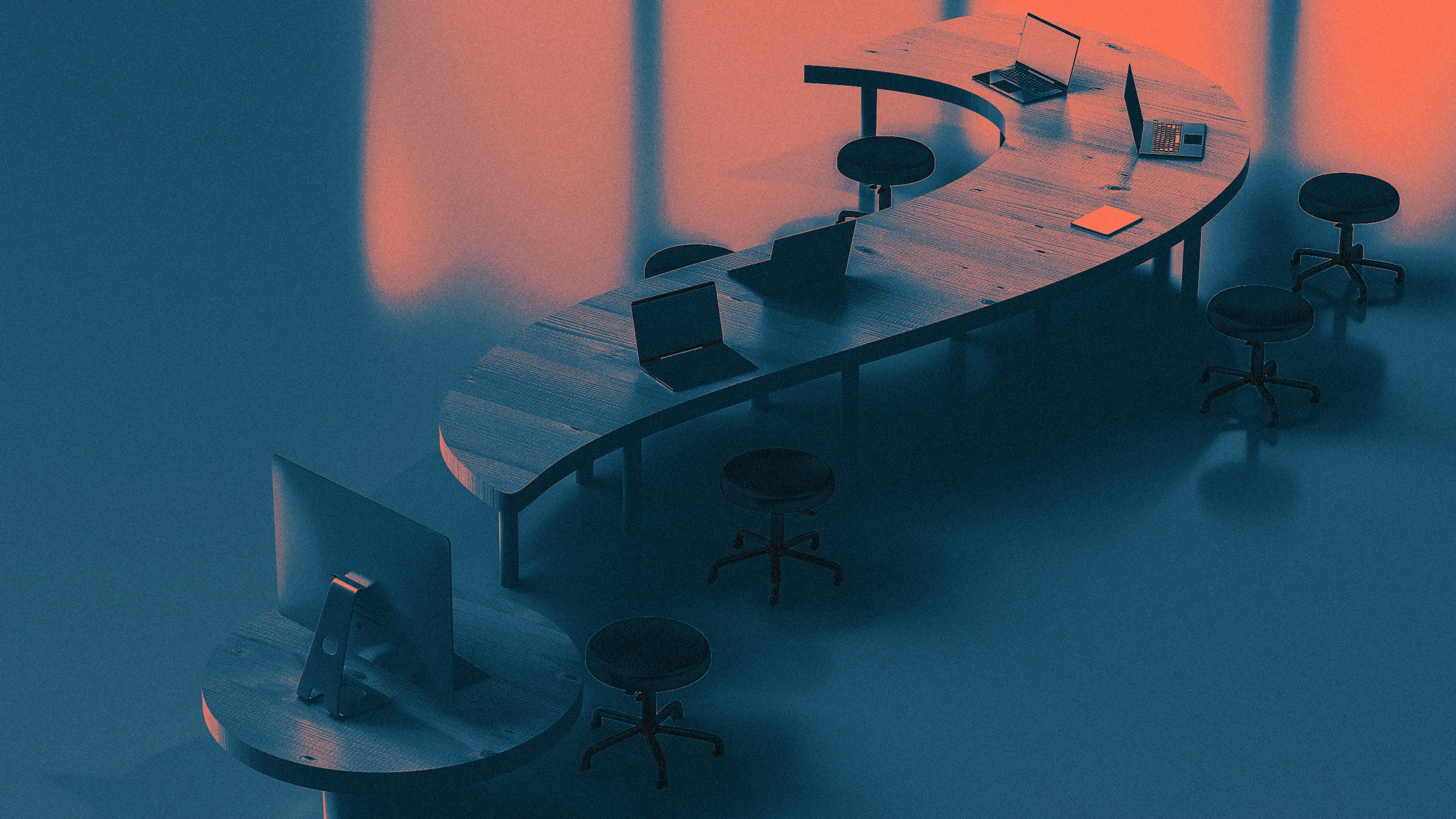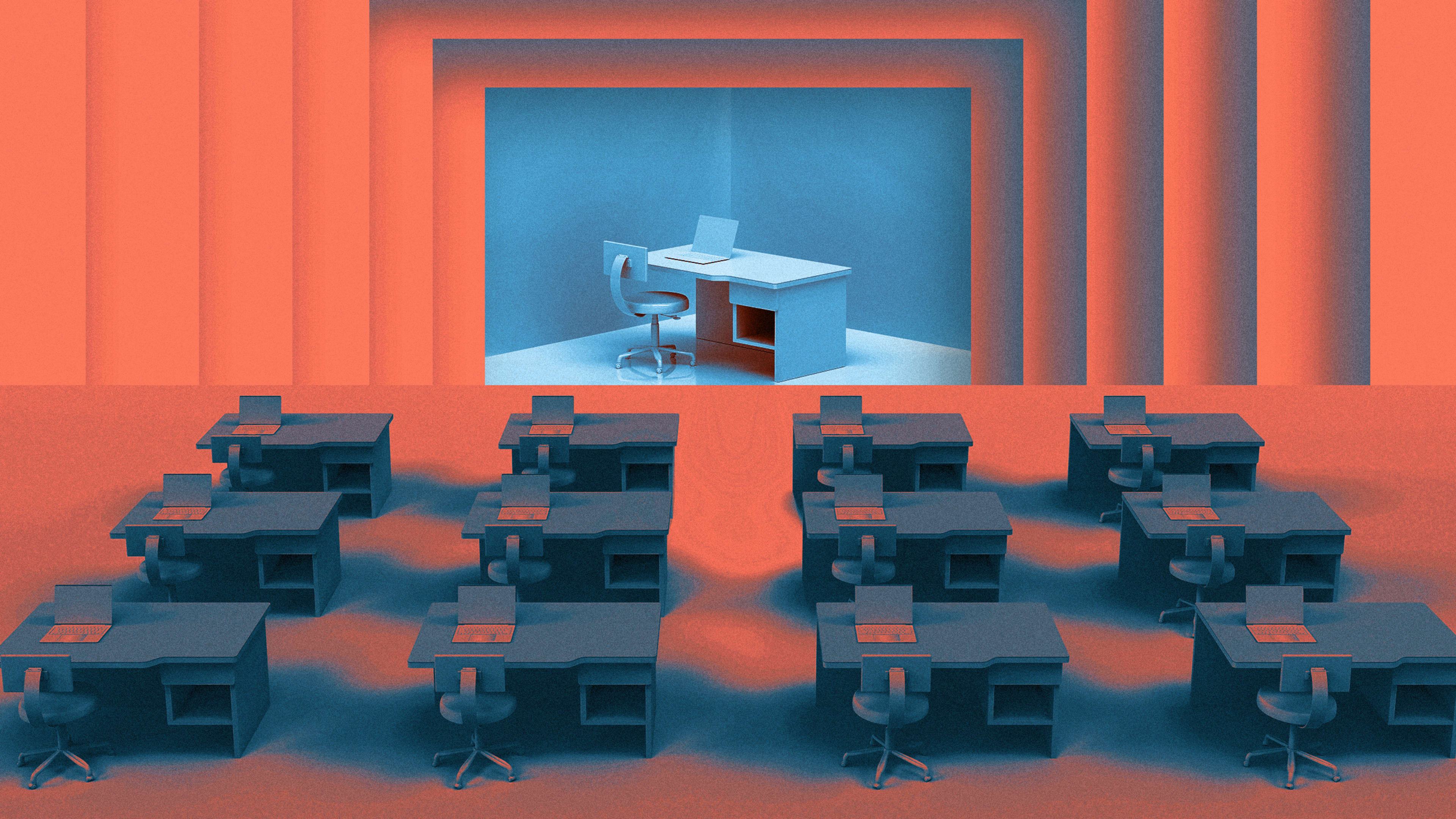I know, I know. You just ordered a 50-foot, untreated walnut conference table, and you envision all of your employees filing into work each day, grabbing a seat at random, and coding away as part of a super chill, inter-departmental brainstorming session. The veining underneath all their MacBooks will look glorious—just use a coaster for the Starbucks! I said use a coaster!
However, a new survey of 1,500 employees by ResumeLab demonstrates that, once again, people prefer working in workspaces that have actual offices—rooms with a door where people can work on their own, in peace.
Weighed against fully open offices, low-partition cubicles, low-partition cubicles with stand-alone offices, and full cubicles, people reported that an open office layout that included offices was the most welcoming, appealing, desirable, and trendy of all options. Keep in mind, “everyone just has their own office without shared space” was not offered as an option.

This finding is in line with nearly all recent office research. Open offices (and cubicles) may be inexpensive, but research has found they can actually impair productivity and encourage less face-to-face interaction than alternatives. On top of that, they come with an unexpected side of gender inequality: Many women report feeling “on display” and subject to harassment in open offices.
One surprise from this new data: 77% of people in an open office layout reported being satisfied with their job. That figure beat cubicles by a small margin, and low partition offices by a landslide. However, I would posit that this finding is probably correlation, not causation. I find it more probable that businesses with open offices have probably modernized in all sorts of other ways that might make employees happy in spite of the open office plan, not because of it. And companies with low-slung cubicles might be stuck in the corporate mentality parodied by Office Space.
Open offices are more in line with the trends of the last decade, and I suspect that if a business has an open office, it could be a younger business that feels more exciting to work at than an old guard company. Or it may have recently relocated from a suburban office park to a city (see McDonald’s), in part to appeal to young urban employee’s lifestyles. Alongside contemporary open-office design, these companies may be more likely to offer perks like cold brew on tap and catered lunches (even if PTO and 401(k)s are more important to employee happiness). Every other piece of data we’ve seen shows that people despise open offices, and that they’re lousy for productivity. So it’s hard to believe that open offices alone are behind employee-reported job satisfaction. Indeed, even within this study, open offices were reported to be the least welcoming, appealing, and desirable of all office types.
Finally, employees reported the highest satisfaction with their personal workspace when it was inside a private office. A whopping 83% of people liked this setup. 83% of people can’t agree on anything in this world! So whatever management tells you, the trendiest office space pales in comparison to an office. But do use a coaster, okay?
Recognize your brand’s excellence by applying to this year’s Brands That Matter Awards before the early-rate deadline, May 3.
